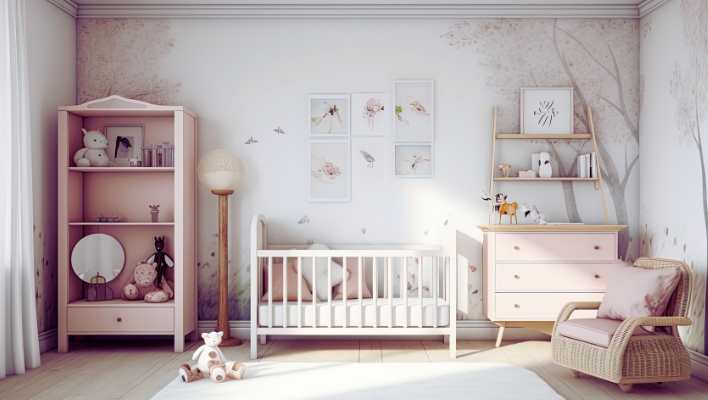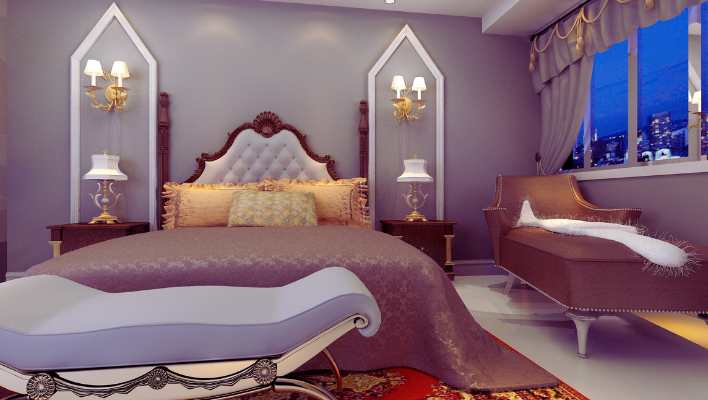To decorate a nursing home room, start by choosing calming colours and comfortable furniture. Then personalize the space with photos, artwork, and familiar objects to create a home-like environment that promotes relaxation and happiness for residents.
Creating a comfortable and inviting ambience in a nursing home room is crucial for the well-being and happiness of its residents. With thoughtful decor choices, you can transform these rooms into personalized and comforting spaces where residents can truly feel at home.
By considering factors like colour schemes, furniture selection, and personal touches, you can create a warm and inviting atmosphere that promotes relaxation and contentment. This article discusses various tips and ideas to help you decorate a nursing home room in a way that is both aesthetically pleasing and functional, while also keeping in mind the unique needs and preferences of the residents.
Table of Contents
- Understanding The Importance Of Room Decor For Nursing Home Residents
- Choosing The Right Colors And Themes
- Furniture And Layout Considerations
- Creating A Safe And Accessible Environment
- Adding Personal Touches And Decorative Accents
- Frequently Asked Questions Of How To Decorate A Nursing Home Room
- Conclusion
Understanding The Importance Of Room Decor For Nursing Home Residents
Decorating a nursing home room is an essential aspect of ensuring the well-being and comfort of residents. The impact of room decor goes beyond mere aesthetic appeal – it plays a crucial role in enhancing the overall quality of life and mood of nursing home residents. By incorporating personalized elements, we can create an environment that promotes a sense of identity and belonging for each individual resident.
The impact of room decor on the overall well-being of nursing home residents
When it comes to nursing home residents, room decor can have a profound impact on their overall well-being. Research has shown that a well-decorated room can contribute to reduced stress levels, increased relaxation, and improved mental health. By creating a warm and inviting atmosphere, we can help residents feel more comfortable and at ease in their surroundings.
How a well-decorated room can enhance the quality of life and mood of residents
A well-decorated room has the power to enhance the quality of life and mood of nursing home residents. By incorporating light, bright colors and natural elements such as plants and artwork, we can create a stimulating environment that promotes positive emotions and mental well-being. Additionally, the layout and choice of furniture can greatly impact the functionality and comfort of the room, allowing residents to have a sense of control and independence within their living space.
Incorporating personalized elements to promote a sense of identity and belonging
To ensure that residents feel a sense of identity and belonging, it is important to incorporate personalized elements into their room decor. This can include displaying cherished photographs, mementoes, and personal items that evoke memories and remind residents of their individuality. By creating a space that reflects their personality and preferences, we can help foster a sense of self and promote a feeling of belonging within the nursing home community.
In conclusion, room decor in nursing homes should be seen as more than just aesthetics. It has a significant impact on the well-being, quality of life, and mood of residents. By understanding the importance of room decor, we can create a nurturing environment that promotes comfort, happiness, and a sense of identity for nursing home residents.
Choosing The Right Colors And Themes

Colour plays a vital role in our emotions and can significantly impact our mood. By understanding colour psychology, we can create a harmonious and comfortable environment in nursing home rooms. Different colours elicit varying emotions and reactions. For instance:
| Color | Effect on Mood |
|---|---|
| Blue | Colour |
| Green | Symbolizes nature and growth, contributing to a feeling of balance and harmony. |
| Yellow | Elevates mood and induces feelings of happiness and optimism. |
| Purple | Represents creativity and spirituality, fostering a sense of introspection and calmness. |
| Orange | Energizes and encourages socialization, stimulating positive interactions. |
Selecting Calming Colors To Create A Soothing Environment
Creating a soothing environment is crucial in a nursing home room, as it can help reduce anxiety and promote relaxation among residents. Using calming colours such as soft shades of blue, green, and lavender can achieve this. Here are a few suggestions:
- Pale Blue: Symbolizing tranquillity, it can create a serene atmosphere.
- Mint Green: Known for its refreshing quality, it evokes a calming sensation.
- Lavender: Promotes relaxation, making it ideal for creating a peaceful ambience.
By incorporating these gentle hues into the room’s walls, furniture, and decor, you can provide residents with a tranquil space that promotes a sense of well-being.
Incorporating Themes That Resonate With Residents’ Interests And Preferences
Another essential aspect of decorating a nursing home room is incorporating themes that resonate with residents’ interests and preferences. This personalized touch can make the room feel like a familiar and comforting space for them. Consider the following:
- Nature-Inspired: Create an environment that brings the beauty and tranquility of nature inside. Incorporate elements like floral prints, nature artwork, and indoor plants.
- Vintage: Utilize antique furniture, old photographs, and vintage-inspired decor to create a sense of nostalgia and warmth.
- Hobby Themes: Incorporate elements related to residents’ hobbies or interests. For example, if someone enjoys gardening, incorporate floral patterns or gardening tools into the decor.
By incorporating themes that align with residents’ preferences, you create a room that feels personal and inviting, enhancing their overall well-being.
Furniture And Layout Considerations

When it comes to decorating a nursing home room, the furniture and layout considerations play a crucial role in creating a comfortable and accessible environment for elderly residents. Optimal furniture placement, choosing comfortable and supportive furniture, and maximizing space with smart storage solutions are key factors to consider. Let’s delve into each of these aspects:
Optimal Furniture Placement For Ease Of Movement And Accessibility
Proper furniture placement is essential to ensure that elderly residents can easily navigate their rooms and access everything they need. Consider the following guidelines for arranging furniture:
- Leave ample space between furniture pieces to allow for easy movement, especially for those using mobility aids such as walking frames or wheelchairs.
- Position the bed in a way that allows easy access from both sides and ensure there is enough space around it to accommodate assistive devices or medical equipment.
- Place chairs and tables near windows or well-lit areas to provide residents with pleasant views and natural light.
Choosing Comfortable And Supportive Furniture For Elderly Residents
Comfortable and supportive furniture is vital in promoting the well-being and overall health of elderly residents. Consider the following when selecting furniture:
- Opt for chairs with proper cushioning and ergonomic designs that provide ample support to the back, neck, and legs.
- Look for adjustable furniture options, such as recliners or beds, allowing residents to find the most comfortable position for sitting, lounging, or sleeping.
- Consider furniture with easily cleaned and moisture-resistant upholstery, ensuring longevity and cleanliness.
Maximizing Space And Functionality With Smart Storage Solutions
In nursing home rooms, maximizing space is crucial to create an open and clutter-free environment. Smart storage solutions can help achieve this while maintaining functionality. Consider the following options:
| Storage Type | Benefits |
|---|---|
| Bedside Caddies | – Keep frequently used items within easy reach – Ideal for storing books, reading glasses, medications |
| Wall Shelves | – Utilize vertical space – Display mementos and personal items – Keep commonly used items accessible |
| Under-bed Storage Containers | – Store out-of-season clothing, extra bedding, and personal belongings – Slide easily in and out for convenient access |
By implementing these smart storage solutions, you can optimize space utilization while ensuring that necessary items are easily accessible for elderly residents.
Read Also: How to Decorate Chairs Without Chair Covers
Creating A Safe And Accessible Environment
In a nursing home, it is crucial to create a safe and accessible environment for the residents. This ensures that they can move around comfortably, without the fear of accidents or injuries. By implementing proper safety measures, you can provide a secure living space that promotes independence and peace of mind for both the residents and their families.
Ensuring Proper Lighting To Prevent Falls And Accidents
One of the key elements of a safe nursing home room is adequate lighting. Poor lighting can make it difficult for residents to navigate their surroundings, leading to tripping and falling hazards. To prevent accidents, it is essential to ensure that the room has a well-lit environment. Here are a few lighting tips to consider:
- Use bright LED or fluorescent bulbs to provide ample illumination throughout the room.
- Install light fixtures near the bed, desk, and other frequently used areas to improve visibility.
- Place nightlights in hallways and bathrooms, providing a soft and gentle glow during the night without causing discomfort.
Removing Tripping Hazards And Promoting A Clutter-free Space
A cluttered nursing home room can be dangerous, especially for residents with limited mobility. Tripping on misplaced items or navigating through an overcrowded space can lead to severe injuries. To create a safe and accessible environment, it is important to remove tripping hazards and maintain a clutter-free space. Consider the following tips:
- Keep the floor clear of loose wires, rugs, or any other items that may cause someone to trip.
- Secure any loose cords to the wall or furniture to prevent them from becoming entangled or obstructing walkways.
- Organize belongings by utilizing storage solutions such as cabinets, drawers, and shelves, making it easier for residents to find what they need without cluttering their living space.
Installing Handrails, Grab Bars, And Other Safety Features
Installing handrails, grab bars, and other safety features is crucial to maintaining the safety of nursing home residents. These additions provide support and stability, improving mobility and reducing the risk of accidents. Here are a few safety features to consider:
| Safety Feature | Benefits |
|---|---|
| Handrails | Assists residents with balance and stability while navigating hallways or stairways. |
| Grab bars in bathrooms | Offers support when getting in and out of the shower or using the toilet. |
| Non-slip mats | Provides traction and reduces the risk of slipping in bathrooms or near areas prone to moisture. |
By incorporating these safety features, you can ensure that residents have the necessary support and assistance they need to move freely and confidently within their room and other common areas of the nursing home.
Adding Personal Touches And Decorative Accents
When it comes to decorating a nursing home room, it’s important to create a space that feels warm, inviting, and personal. Adding personal touches and decorative accents not only helps to create a homely atmosphere, but it can also evoke positive memories and emotions for the residents. In this section, we will explore some creative ways to add personal touches and incorporate decorative elements into the room.
Displaying Family Photos And Sentimental Items To Evoke Positive Memories
One of the easiest and most effective ways to add a personal touch to a nursing home room is by displaying family photos and sentimental items. Surrounding the resident with familiar faces and cherished memories can evoke positive emotions and bring a sense of comfort and familiarity to the space. Here are a few tips for displaying family photos and sentimental items:
- Showcase a photo collage on a prominent wall using picture frames or a decorative wall decal. Arrange the photos in a grid or heart shape for an eye-catching display.
- Place framed photos on shelves, bedside tables, or a dedicated photo ledge. Opt for different sized frames and mix and match colors for an eclectic look.
- If wall space is limited, consider creating a tabletop display using a decorative tray or shadow box. Arrange the photos, small trinkets, and sentimental items in an organized and visually appealing manner.
- Rotate the displayed photos regularly to keep the room feeling fresh and to stimulate positive memories.
Incorporating Artwork, Plants, And Other Decorative Elements
Besides displaying family photos, incorporating artwork, plants, and other decorative elements can help to create a visually appealing and personalized nursing home room. Here are some ideas to consider:
- Hang artwork that resonates with the resident’s taste and preferences. This could include landscapes, abstract paintings, or even portraits of loved ones.
- Add a touch of nature by placing potted plants or fresh flowers in the room. Not only do plants add a burst of color and life to the space, but they also provide a sense of tranquillity and well-being.
- Include decorative accessories such as throw pillows, cozy blankets, and stylish lamps to enhance the overall ambience of the room.
- Consider incorporating a small bookshelf or a display shelf to showcase books, collectables, or other cherished mementoes that hold sentimental value to the resident.
Tips For Creating A Homely Atmosphere And Making The Room Feel Warm And Inviting
To create a homely atmosphere and make the nursing home room feel warm and inviting, here are a few additional tips to consider:
- Choose a color scheme that promotes relaxation and comfort. Soft tones like pastels, neutrals, and warm earthy colors can create a soothing environment.
- Ensure proper lighting by incorporating a combination of natural light, overhead lighting, and task lighting. Consider adding dimmable lights to create a cosy ambience during the evenings.
- Use soft textures such as plush rugs, fluffy pillows, and cosy blankets to add warmth and create a sense of comfort.
- Arrange the furniture in a way that maximizes space and promotes ease of movement. Make sure to include a comfortable seating area for the resident and their visitors.
By adding personal touches, incorporating decorative elements, and creating a warm and inviting atmosphere, you can transform a nursing home room into a personalized space that promotes well-being and happiness for its residents.
Frequently Asked Questions Of How To Decorate A Nursing Home Room
How Can I Make My Nursing Home Room More Homey?
To make your nursing home room more homey, add personal touches like family photos and decorations, bring in comfortable bedding and pillows, use soft lighting, bring in familiar scents, and customize your space to your liking.
How To Decorate A Room For A Dementia Patient?
Decorating a room for a dementia patient: Use calming colors, minimize clutter, create a familiar environment, incorporate sensory stimulation, and ensure safety with appropriate furniture and lighting.
How To Decorate An Elderly Room?
To decorate an elderly room, consider using soft colors and ample lighting for a calming atmosphere. Opt for furniture that is comfortable and easy to navigate around. Add grab bars and non-slip mats for safety. Include personal touches like photographs and keepsakes to create a homely feel.
How Can I Make My Care Home Room Nice?
To make your care home room nice, focus on these key elements: – Choose soothing colours and comfortable furniture. – Add personal touches like photos or mementoes. – Ensure good lighting and natural sunlight. – Keep the room clean and clutter-free.
– Hang curtains or blinds for privacy and to create a cosy atmosphere.
Conclusion
Decorating a nursing home room requires thoughtful consideration and creativity. By incorporating personal touches, comfortable furnishings, and practical storage solutions, you can create a warm and inviting space tailored to the resident’s needs. Additionally, utilizing calming colors and incorporating natural elements can create a soothing ambiance.
Remember, the goal is to make the room feel like home, providing a sense of comfort and familiarity for older adults. With these tips in mind, you can transform a nursing home room into a welcoming and personalized environment.



